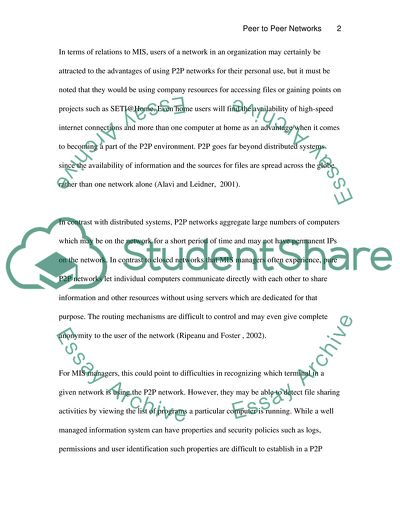Cite this document
(Peer to Peer Networks Essay Example | Topics and Well Written Essays - 1750 words, n.d.)
Peer to Peer Networks Essay Example | Topics and Well Written Essays - 1750 words. https://studentshare.org/information-technology/1709589-peer-to-peer-networks
Peer to Peer Networks Essay Example | Topics and Well Written Essays - 1750 words. https://studentshare.org/information-technology/1709589-peer-to-peer-networks
(Peer to Peer Networks Essay Example | Topics and Well Written Essays - 1750 Words)
Peer to Peer Networks Essay Example | Topics and Well Written Essays - 1750 Words. https://studentshare.org/information-technology/1709589-peer-to-peer-networks.
Peer to Peer Networks Essay Example | Topics and Well Written Essays - 1750 Words. https://studentshare.org/information-technology/1709589-peer-to-peer-networks.
“Peer to Peer Networks Essay Example | Topics and Well Written Essays - 1750 Words”. https://studentshare.org/information-technology/1709589-peer-to-peer-networks.


